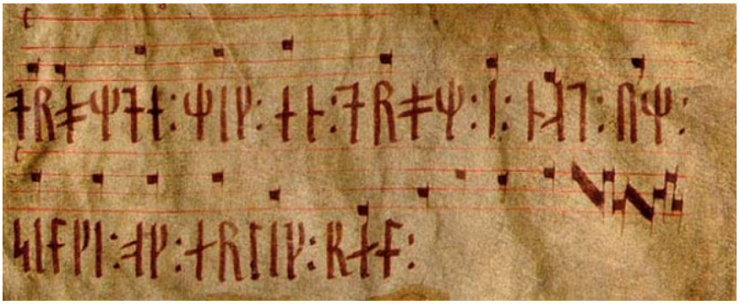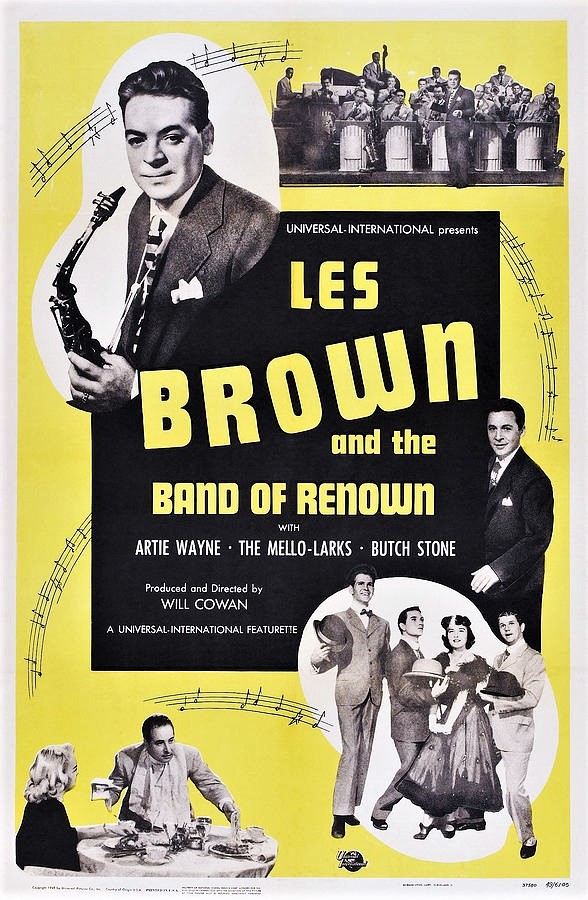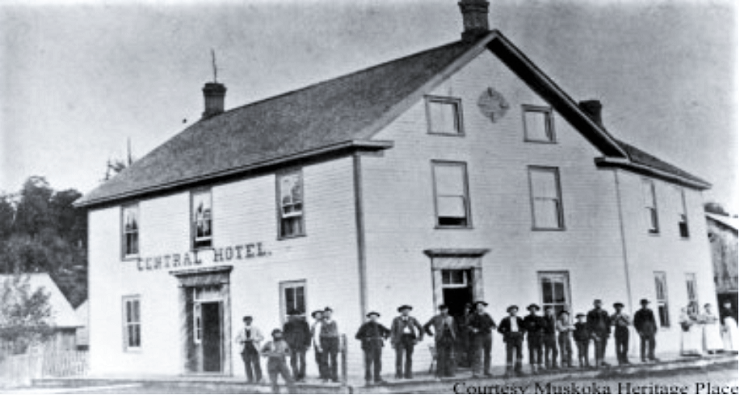SONGS OF MUSKOKA: LOKI’S NET AND HISTORY OF UTTERSON, PORT SYDNEY, ALLENSVILLE
STEPHEN RICHARDS | Special to MuskokaTODAY.com FICTION
Episode 6, Part 1
900 million years ago
The first multicellular life develops around this time as single-celled creatures formed colonies of many individuals called “Hekkle’s”
800 million years ago
In the asteroid belt as members of the Muskoka asteroid family, meteors break away targeting various places on Earth and the moon creating a fundamental increase in the phosphorus levels, severe perturbations to Earth’s climate system and the emergence of animals.
One of these meteors, ‘Skulle,’ is composed of an unusually high concentration of carbonated high grade iron ore. It also contains a unique foreign one-cell organism called “Jekkyl’s” that hitchhiked for the ride. The meteor smashed into earth at coordinates 45.2535° N, 79.4420° W. And it created an oval impact crater 8 kms long, 5 kms wide and 65 m deep, melting the limestone rock forming a hard shell banding the perimeter.
Thusly it kick-started more advanced life as “Hekkle and Jekkyl” formimg a symbiotic relationship. Then these new combined multicellular animals undergo their first splits. First they divide into the sponges and everything else — the latter being more formally known as the “MuskokaEnsemblezoa.”
About 20 million years later, a small group called the SprucedalQuartetzoa break away from the rest of the MuskokaEnsemblezoa. SprucedalQuartetzoa are thin plate-like creatures about a millimetre across, and consist of only three layers of cells. It has been suggested that they may actually be the last common ancestor of all the animals.

982 AD
Three brothers: Stefn, Alun and Uttren Nyhus left their boyhood friends Leifur and Thorvald Ericson to explore Vinland’s interior in three dragon skips (Norse for ship). The trio sailed and rowed west, instead of south as the Ericsons had done, through Hudson’s Bay to Georgian Bay. The smallest vessel “Skidhbladhnir” was hauled by horses over ice through the Blackstone River System and eventually to a skulle-shaped lake in a skjoldr-(shield)-shaped valley with the clearest water they had ever seen.
These Vikings camped near a stand of birch and wild grapes, with excellent fishing and a “tun,” a flat area suitable for farming and grazing. Over time they built a longhouse (over the doorway was inscribed “Ny hus” meaning new house). Then a dam at the river, a mill with an eight-legged base coinciding with compass points and a kind of forge with a mortar base.
While fishing, Uttren dives deep into the lake and discovers a several large fragments of high carbon content iron ore that can be assembled to form a large skull. Eventually this iron was forged into steel tools and musical instruments.
They create a birch salve to relieve the bites from the bukr (blackflies). Plenty of the trees bore burls that were easily worked into bowls and cups. Copper and tin were extracted from the rock cliff on one of the two islands. On it Stefn inscribed large runes into it: “Vatn skulle-hja-tun (field beside the skull in the lake).” And elsewhere ‘Nei skraelingjar hus (no one home).” And ‘Skjoldr taka fara (have shield will travel).” He filled the cuts with an organic paint to make the graffiti more visible.
Life was good until October 6, 993. During the harvest celebration on their Bondi (farm), the partyers were frightened by a three-day period of severe solar flares during the great maximum. “The Norns,” they cry observing the significantly increased sunspots. Norns are three goddesses representing the sun, moon, and earth and are believed to be “weavers” of their fate.
Ase, their “kunnigr.” who knows of much of such. This soothsayer dons her feather cloak, representing the goddess Freyja, and consults with the ancient tree they call “Yggdrasil.” It is surrounded by shallow trenches representing the 9 worlds.
The first night, she says the clan must plant 9 staves, one in each trench, and they comply. On the second night, the solar flares continue; the air is charged with electricity. Ase instructs Valder to carve ravens Huginn (representing thought) and Muninn (knowledge). (Sometimes these ravens are referred to as Hekkle and Jekky. Ase puts on her embroidered tapestry, and becomes a sorceress, places Huginn and Muninn in the tree and beckons them to seek out the cause of this danger. She enters a trance-like state as she prays, but sadly nothing is revealed.
The “tongue of flames” continue on the third night. The winds pick up. Various ropes, riggings and what-not get twisted into knots. That night, Ase has nightmares and when she awakens her hair has turned grey and her face is wrinkled.
As Ase steps outside, a large nosed creature lumbers from the brush — eight feet at the shoulder, weighing 2,600 lbs., with a two-layered coat, short tail and bell-shaped flap on its neck. The beast stomps its huge legs and sneers with a menacing yet goofy look.
The strangest features of this beastly apparition are its palm shaped antlers, six feet wide with many forks and eye guards and dripping red velvet flesh. The dead eyes stare coldly at her — and then it’s gone. In its place is a large snake with a rattle appearing on its tail. It slithers into a rock cairn.
“It’s Loki! These are bad tidings…. We must flee. Make the sign Skuld’s net … at 4 compass points around the site to provide protection against Loki, as we must prepare the skip to leave this site” shouts Ase to anyone who is listening.
As they are loading the dragon ship, the solar flares peak followed by a horrendous thunderstorm. Great bolts of lightning blazes and boom illuminating the dark sky. This is followed by a bombardment of huge hail stones like knaittlekr (Norse game using a hard wooden ball similar to lacrosse). They flatten structures, smash branches and kill all life in its path. Thirty-eight onboard are struck dead — many suffer fatal head blows. The hull of the dragon boat is breached and it turtles while sinking, tossing all the bodies overboard to their watery graves.
Norway: 300 years later
The heroes’ spirit was kept alive through oral histories by the survivors and their kin. Eventually Snorri Sturluson chronicled these tales in his Vinland Sagas about the “vatn a skulle-hja-tun,” “Skìdhbladhnir” (magical transportable ship that always had a favoring wind), and Loki’s latest prank.
“In Norse mythology, Loki was known as the sneaky and trickster god.
“The noun loki means knot or tangle and was a maker of nets symbolizing his ability to snag other’s plans. Loki was jester-like in appearance, with many artistic representations showing him dancing and sneering. His nose is often depicted as large. The main symbol associated with Loki is a snake, as it represents his cunning and mischievous behavior. So Loki, being a shapeshifter, loved to play pranks. It is not clear whether this was due more to a simple desire to have fun”’
Seven survived that incident from that magical ship. The decimated crew had fashioned a mast and sail affixing it to the faering and would follow the seaway eventually to an island marked on their maps. Some time later, Leifur and Thorvald rescued them from the island and took them home.
Meanwhile Loki danced, jeering his large nose at the heavens, and when the deed was done, coaxed the hail to stop so the mortals could leave forthwith.
And while dancing, Loki sings:
“Just sit right back and you’ll hear a tale,
A tale of a fateful trip
That started from this southern port
Aboard this tiny ship.
“The mate was a mighty sailing man,
The skipper brave and sure.
Seven passengers set sail that day
For a 1 annum tour, a 1 annum tour.
“The weather started getting rough,
The tiny ship was tossed,
If not for the courage of the fearless crew
The Skìdhbladhnir2 would be lost, the Skìdhbladhnir2 would be lost.
“The ship set ground on the shore of this old charted desert isle
With Olaf and Valder too,
Bjorn and his wife Yrsa,
The beloved Ingrid
Kari and Soren,
Here on New found land Isle.
“Now this is the tale of our castaways,
They’re here for a short, short time,
They’ll have to make the best of things,
It’s an uphill climb.
“The leader and his warrior too,
Will do their very best,
To make the others comfortable,
In their ice ’n’ rocky nest.
“No horn, no forge, no grog or ale,
Not a single luxury,
Like Ragnar’s Iceland,
It’s primitive as can be.
“So listen carefully little friend,
You’re sure to get a smile,
From seven stranded castaways,
Here on New found land’s Isle.”
Utterson: Fall 2004
He took a waterproof flashlight out of the passenger foot well and walked towards the water, whistling softly. The tall muscular man standing 6-foot-2 with almost white hair, wore an old black leather university jacket with a white scarf at his throat and dark black jeans. His eyes were his strangest feature, like water over a stone, clear with no colour, and there was a slight ironic quirk at the corner of his mouth. It was the look of a man who did not take life seriously.
Looking around, he stops, pulls a Wrigley’s spearmint gum from of a pack. Unwraps it and chews methodically. Then turns around, returning to his Honda Ridgeline Adventure Truck to grab a kit bag. He checks his iphone, slips it into his waistband in back, pulls on touch-sensitive work gloves returning across the field in the rain to the site in front of the clear lake.
The tent was old, musty smelling as if it were unused for years. A technician in blue coveralls is sorting some gear. A bearded man emerges from the tent wearing yellow slicker rain gear.
“Yeah, there’s definitely something down there. This will be a wasted effort if Rimstead doesn’t turn up soon” exclaims the bearded man. The technician responds. “He will be here. I was told he couldn’t resist the challenge.”
Rimstead approaches. “So what have we here?” The technician answers “I am John Utterson,” and proceeds to give an accounting of his findings. The bearded fellow, Robert Lewis Stevenson, introduces himself as an investigative reporter, and steps aside to let Rimstead pass into the tent. Rimstead examines the GPR images (ground penetrating radar) and AMS readings (accelerator mass spectrometry) of the procured objects, tests the diving gear, nods his head and says: “So what are you waiting for? Let’s go!”
Episode 6, Part 2
2012: Marley’s apartment, Gravenhurst
Marley Kim is having breakfast. Black tea, dry toast and half a grapefruit.
The other day, she had received a call from Rimstead, a local salvage expert asking for help regarding the recovery and restoration of some old musical instruments found in a lake. The goal is to store these items in the backroom of Utterson Town Hall, next to the train station, until such time these are restored and transferred to the museum in Huntsville.
Marley consulted the local paper to get some background information.
Robert Lewis Stevenson, lead reporter, Gravenhurst Banner
Article 1: History of Stevenson County, 1868
The northwest part of the township along the shores of Skeleton Lake is very rugged with granite ridges and steeply cut valleys. Three villages developed in Stevenson Township. Utterson and Allensville on the Muskoka Road and Port Stevenson at the end of Mary Lake.
Sydney George Stevenson (George to his friends) owned Stevenson Locomotive and Lighthouse. He founded Port Stevenson, building this fine home on Mary Lake named after his wife (Mary Grunwald).
Sometime later, the village boasted a public school, several good private residences, a large public hall in which amateur dramatic performances were given with great effect and got up regardless of expense, a grist mill, oatmeal mill, saw mill, some good stores and the Anglican Church. The latter is a gothic edifice furnished with stained glass windows, in lasting memory of Rev. Cooper, through whose exertions mainly the church was built.
Port Stevenson could be reached from Huntsville in the summer by a steamer and that it enjoyed a tri-weekly mail from Bracebridge, with a daily stage in the summer.
Dave Allen, George’s business partner, built a fine home nearby in Allensville, after returning early from the conflict prior to the first Boer War and missing the tip of his shooting finger. His favorite prank was the “pull my finger” game.
At his retirement party, he was overheard saying: “You wake to the clock, you go to work to the clock, you clock-in to the clock, you clock-out to the clock, you come home to the clock. You eat to the clock, you drink to the clock, you go to bed to the clock, you get up to the clock, you go back to work to the clock…. You do that for forty years of your life and you retire — what do they give you? A clock!”
George’s corporate lawyer, Gabriel John Utterson, was described by Stevenson as someone who was quick to judge, did not partake in gossip, but professed that humanity’s downfall would come from indulgences. Gabriel built his modest home and established a town nearby and conveniently not far from the train station. By 1879 the town of Utterson boasted a store, blacksmith shop, a large hotel “well-conducted by Mr. Collins. And a well-built Methodist Church with stained glass windows, a town hall, three stages. He also boasted mail delivery daily to/from Bracebridge.
Article 2: Forensic work in 2004
“Paul ‘Rimmer’ Rimstead and John Utterson III retrieved from the dive various artifacts and conveyed them to John’s facility for testing. John consults with Dr. Julius Jekkyl, a local expert in chemistry, to validate his findings.
The recovered artifacts included 38 skeletons. Carbon dated to 10th century. Evidence of peri mortem injuries on several skulls.
Cause of death unknown. Possible theory is murder/suicide/fell off cliff from diving off Anderson Island. Broke through ice? Exposure? Indigenous attack?
Mystery remains unexplained.”
Article 3: 2010 Testing
“New technology and the advent of DNA testing facilitates more rigorous analysis of artifacts. John retrieves teeth fragments from storage and sends the samples for DNA testing to be done at the Max Planck Institute of Human History.
News Flash: Scientists determine bodies found in 2004 were non-Indigenous, possibly Nordic. How can that be? Evidence of Vikings in Muskoka was never found before. Investigation continues….”
Article 4: Site re-examined over next 2 years.
“Investigation continues by Utterson assisted by Stevenson.
A fire-pit discovered on Hogs Back Island contains traces of copper and tin in a concealed crucible. Mortar samples sent out for carbon dating.
Mill foundation has eigh legs at points of a compass. Appears to be Nordic 10th c construction? Dam recently reconstructed at Bent River where the water flows out west.
AMS (accelerator mass spectrometry) of mortar reveals dating to 10th century.
Non organic matter removed from graffiti on the cliff face using ‘Goo-Gone’ nano-solvents to reveal Nordic runes. Conclude so-called Vikings named this lake after a skull shaped rock harvested from the lake bottom containing unusually high grade carbon rich iron.
Ground penetrating radar discovers outline of a longhouse. Testing of a post shows reduced levels of carbon 14 in the wood consistent with high levels of solar flares 775-993 AD peaking in that last year.
A second dive and salvage work will be led by Paul ‘Rimmer’ Rimstead.”
Marley calls back Rimmer. They agree to meet for a coffee.
Later that day: Muskoka Roastery, Huntsville
“The first dive was six years ago and we retrieved the remains of some bodies. The skeletons looked old and remarkably well preserved with evidence of severe head trauma and violent dismemberment. The same group contracted me again recently for a second project.”
Rimmer then provides details of the second salvage operation.
“Advanced GPR identified another anomaly near the water and authorities decided it was worth investigating. While at my cottage in Sprucedale, I received instructions from John Utterson, to excavate what appeared to be the foundation of a building and conduct a second dive to retrieve some other items. Stevenson showed up to document the process.
The lakebed and surrounding area looked like a meteor impact crater. … However no meteor or stones were ever found. Only dull tools made from high quality steel. Trace elements, I am told, suggest these were fabricated locally. Discovered an underwater current going south…weird?
HNKRS was cut into a stump found in the lake bottom – HNKRS is a old Norse for a sitting stool. Runes were inscribed on fir tree planks, some inscription that looks like ‘skuld’s net’. Clean low angle cuts were made from metal tools not available in the area long ago.
I traced a 213-foot deep current to a chamber – to something made of “Hollow Oak,” native and unique to Norway and well preserved.
There was an embroidered tapestry typically worn by a sorceress snagged on the deck.
Further inspection of the wooden item reveals what could be a clinker built long boat with a carved dragon’s head – only three others had been discovered in the world. It’s partially calcified from rock secretions. Special handling equipment is required to salvage it — stuff I would need to get should they decide to proceed.
In addition, stowed in the hull contained what appeared to be fragile musical instruments remarkably well preserved in this cold pristine grave, which I left in situ.
“So I called you for your expertise for retrieving the instruments.”
(Stevenson has continued his research and published another article.)
Article 5: Stevenson researches local myths.
Sightings of people with sharply cut faces, white skin that bronzes in summer, some with red hair.
Evidence of raven worshippers.
Snake and knot runes – Loki?
Other strange markings and graffiti.
The next day: Skeleton Lake
On third and final dive, Rimmer follows Marley’s directions for handling instruments in a prescribed container of water taken from the site. He brings them to surface.
Marley examines the items and identifies the following objects: Jelling Dragon – like a lute; Skalmejen – like a clarinet; jaw harp; blowing horns – animal horns different sizes, some with tone holes; Falster pipe – like English horn; Jorvic pan flute; drums, bells and whistles.
And there was an early form of written music…. “Incredible!”
Marley helps with the handling of the rare instruments, piling the containers into the hatch of her Pinto. And an idea forms. Organize a band to rehearse at Utterson Hall for a Viking themed concert. She mulls that over. She smiles and thinks “that would be fun.”
Marley calls Bart Neely about restoring the instruments since he has the tools and skillset to do so.“It would be awesome to have these unique items exhibited at the Huntsville Gallery!”

That evening: After a Les Brown concert in Sprucedale
While walking to the Venue of the Les Brown Concert, Bart Neely is blindsided, struck in the back of the head, knocking him out cold. The assailant flees, leaving a remnant of the weapon. Two ravens peck at Bart taking him for dead.

Episode 6 part 3 (conclusion)
2012 Utterson
Dr. Julius Jekkyl, the chemistry teacher at Huntsville High School was best described as near-sighted, socially awkward, timid, stooped and ill formed; a man who spent his life being somewhat of a recluse, shunning the finer things but secretly wanting more out of life. He acted civil to others but was sweet on Marley Kim and was determined to make her take notice.
At night, he would experiment with various formulations of drops, tinctures, lotions, and serums hoping it would help him become a better person.
And while doing so, he chants:
“Round about the cauldron go;
In the poison’d entrails throw.
Toad, that under cold stone
Days and nights has thirty-one
Swelter’d venom sleeping got,
Boil thou first i’ the charmed pot.
(he tosses in an ingredient)
Double, double, toil and trouble;
Fire burn, and cauldron bubble.
Fillet of a fenny snake,
In the cauldron boil and bake;
Eye of newt and toe of frog,
Wool of bat and tongue of dog,
Adder’s fork and blind-worm’s sting,
Lizard’s leg and howlet’s wing,
For a charm of powerful trouble,
Like a hell-broth boil and bubble.
(he tosses in an ingredient)
Double, double, toil and trouble;
Fire burn and cauldron bubble.
Cool it with a baboon’s blood,
Then the charm is firm not crud.
O well done! To remove my chains;
So my beloved shall share i’ the gains;
And now about the cauldron sing,
Live elves and fairies in a ring,
Enchanting all that I put in.
(he tosses in the final ingredient)
Double, double, toil and trouble;
Fire burn and cauldron bubble.
By the pricking of my thumbs,
Something awesome this way comes.
Open, locks,
Opportunity knocks!”
This process continued until this day, he develops DT Elixir, consisting of Hydroxychloroquine, Chlorine Dioxide, Colloidal Silver, Chaga mushrooms, oil of oregano, eye of newt, and elderberries … and this transforms him. To transform back, he requires a Pfitzer Spritzer vaccine. To keep his alter ego a secret, he books a room at the Central Hotel in Utterson under the name ‘Buddy-Love Hekkle’ and leaves his gear and new duds there.
Buddy befriends John Utterson. And for some unknown reason, Buddy receives a gift of a fashionable cane.

Some time later. Les Brown concert, Sprucedale
Les Raymond (Brown) and His Band of ReKnown are playing in the Sprucedale Hotel and Dance Hall. Julius takes his DT Elixir in the bathroom at the dance hall. And like a wilting plant getting a much needed drink of water and some sunlight, he rises up and blossoms. Dark brooding eyes lighten, widen and sparkle. His smile becomes warm and he appears immensely charming —remarkably changing his persona completely. He is suave, handsome, even breezy. A stubble in a hipster kind of way sprouts. His hair seems to lengthen as he tussles it for a carefree look.
He doffs his cardigan and sensible earth shoes placing these in his duffle bag, undoes the top button of his sport shirt, dons his Italian dancing loafers and a velveteen jacket, raising the collar stylishly. He makes a splashy entrance, while the band plays “Leapfrog.” He snatches up his Couesnon flugelhorn taking the solo then pushes the drummer aside to finish the piece behind the bass drum.
Rimmer Rimstead is at the bar, working his way through a plate of spaghetti and is halfway through a bottle of Murphy’s when he is disturbed by the raucous playing of an obnoxious audience member beating on the drums. In addition to having an incredible talent for singing, Rimmer plays the bari sax and has a drum kit in his basement. He knows good drumming. After eyeballing the nut, he returns to his beer.
Buddy is now on the dance floor, with several dance partners, busting his moves.
A small dark-haired woman, leather jacket, black mini-skirt, high-heeled ankle boots enters the room with a purpose. Marley Kim booked the act for the club owner who is now seated beside her; she watches the band appreciatively play “Sentimental Journey,” wishing that Bart Neely could have accompanied her.
Buddy waltzes over, introduces himself to Marley. “I am Buddy-Love. You know what you would look really beautiful in? My arms. Let’s dance.” She rejects him. Buddy takes offence and gets belligerent. “No means no!” she cries. Rimmer, overhears the confrontation and storms over. “Hey Buddy, that’s not civil. You take your French horn and beat it.” Rimmer watches the man leave and checks to see if Marley is OK.
Marley is shaken by the experience. And calls Bart to see if he can drive her home.
As Buddy storms out, he mutters to himself “I need a bigger dose of DT Elixir.”
Some time later:
(As Julius increased the dosage, the effect lasted longer. When he runs out of Chlorox brand chlorine dioxide and substitutes it with Aspen Clean, this ingredient substitution destabilized the DT Elixir causing changes to happen unexpectedly … and he became more of a brute and a violent anti-vaxxer.)
In response to Rimmer’s intervention, Hekkle/Jekkyl plotted revenge and breaks a cane over the man’s head, concussed on the ground and left for dead. “That’ll teach you…she was almost mine!” he screams shaking his fists.
Robert Lewis Stevenson and John Utterson investigate the assault. Together, they are close to identifying the perpetrator of the assault by questioning everyone who attended the concert. Two people remain to be questioned. One is Buddy-Love, a new guy seen around dance halls lately, who is staying in a hotel room that is rented by the month.
Robert and John knock on Buddy’s door. No answer. The hotel desk clerk opens the door to Buddy’s room. It’s empty.
Meanwhile, Buddy-Love is at Julius’ lab, distraught. Buddy can’t control his transformation. Julius can’t teach as Buddy-Love. Buddy likes his freedom, but needs Julius to continue his work.
Buddy reluctantly takes his booster of Pfitzer Spritzer vaccine, but it is now ineffective. He reads in the local paper he brained the wrong man. It was not Rimstead, but some other fella. Part of him feels remorse. He realizes he has become someone he abhors. And in his self-conflict his heart bursts and he dies.
Loki laughs.
Robert says “Next on the list: Julius.” Robert and John drive over to Dr. Julius Jekkyl’s home. They knock. No answer. They get the property manager, Mr. Allen, to unlock the door. They find Julius on the floor dead wearing Buddy’s clothes. He is lying there with a remnant of a cane grasped in his hand.
John Utterson recognizes the cane remnant as his gift to Buddy and Robert asserts it matches the remnant left at the scene of the assault. Mystery solved.
Earlier, at the end of the Les Brown concert, Sprucedale
Marley has been calling Bart. He hasn’t arrived to pick her up and has conflicting emotions. She is worried. “Did something happen?” She is also mad. “He let me down.”
She steps outside, spots Bart’s Gremlin-Pacer car and the dark form lying beside the car in a coma.
“Oh my gosh — it’s Bart.”
She calls the ambulance and Bart is rushed to the hospital.
A few days later, in the hospital
Bart awakens. Marley is seated beside his hospital bed holding his hand, bearing a concerned look. “How are you feeling?”
“My head hurts.” He uses his other hand to feel the bandage on his head. “Ouch! Last I remember, I was going to pick you up at a Les Brown concert. I left my apartment in Gravenhurst, drove to Sprucedale and someone whacked me over the head.”
Marley looks at him concerned. “ I don’t recognize these places.” She Googles them “Those are in Canada. You’ve never been to Canada!”
“Sure I have. I played saxophone in a number of concerts there, found my Uncle Paul’s missing sax, Satchmo’s horn, Cable’s compositions….”
“Huh? First of all, Les Brown never played in Canada. You play the trumpet, I play the sax. You don’t have and never had an Uncle Paul. You live in Oakpark, Illinois, were a Chicago psychologist. And you are now retired.”
“So how did I get concussed?”
“During your trumpet solo, you got too close to the trombone player, and the slide hit your noggin’.”
“So it’s all been a dream?”
He looks around the orange hospital room – a poster of Paul Desmond seated playing his sax. Next to it, Louis Armstrong, cheeks puffed out playing his trumpet. Outside, a little girl twirling around dancing in the snow. A 40-lb dog is circling her. Her dad, smiling, in a red coat with white scarf. A train is heard in the distance. A hotel is brightly lit up with spotlights. A tug boat is chugging along on the lake. A strong wind whistles between the buildings. Two crows on a hydro line cackle.
He continues to pan around the room. Two orderlies pass the doorway, one wearing a reindeer hat, the shorter one wearing an elf’s hat. On a table are tulips in a vase, a picture book on “Reflections on Muskoka” by Roberta Bondar, a signed get well card from his friend and trombone player Captain Howard Borden. Les Brown is on the TV in a scene from the “Nutty Professor.”
Bart’s eyes return to Marley, observing her green dress, hair pulled back in a ponytail, drinking tea and noshing on a cranberry scone.
“Yes Bob Hartley, it is all a dream. And stop calling me Marley. My name is Emily.”
Somewhere down the hall, Loki laughs. And a thank you note from Howard Cable is caught in a breeze….
~ The End and final episode of Due North, an homage to Due South ~
Steve Richards is a Muskoka musician who has wiled away his time during COVID researching, writing and making up local history with a musical bent.
